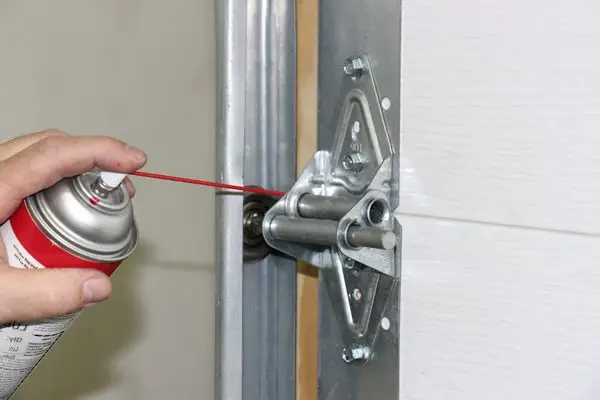WD40 is a versatile product that can be used to lubricate, protect and clean a variety of surfaces. However, if you have accidentally sprayed WD40 on your garage door, it can be difficult to remove without causing damage to the surface. In this article, we will provide step-by-step instructions on how to effectively remove WD40 from your garage door.
Why WD40 is Hard to Remove
WD40 is a petroleum-based product that is designed to displace moisture and protect metal surfaces from rust and corrosion. The unique combination of oils and solvents in WD40 makes it difficult to remove with regular cleaning products. In addition, the longer WD40 sits on a surface, the harder it becomes to remove.
What You Will Need
To remove WD40 from your garage door, you will need the following items:
- A soft cloth or rag
- Warm water
- Dish soap
- White vinegar
- Baking soda
- A scrub brush or sponge

Step 1: Rinse with Warm Water
The first step in removing WD40 from your garage door is to rinse the affected area with warm water. This will help to loosen any dirt or debris that may have become stuck to the surface. Use a soft cloth or rag to gently clean the area.
Step 2: Apply Dish Soap
Next, apply a small amount of dish soap to the affected area. Dish soap is a powerful cleaning agent that can help to break down the oils and solvents in WD40. Use a soft cloth or rag to gently massage the soap into the surface, being careful not to scrub too hard and cause damage.
Step 3: Rinse with White Vinegar
After you have applied the dish soap, rinse the affected area with white vinegar. White vinegar is a natural cleaning agent that can help to remove any remaining residue from the WD40. Use a soft cloth or rag to gently clean the area.
Step 4: Apply Baking Soda
Next, apply a small amount of baking soda to the affected area. Baking soda is a mild abrasive that can help to remove any remaining WD40 without damaging the surface of your garage door. Use a scrub brush or sponge to gently scrub the affected area.
Step 5: Rinse with Warm Water
Finally, rinse the affected area with warm water to remove any remaining baking soda or vinegar. Use a soft cloth or rag to gently clean the area.
Additional Tips for Removing WD40
- If the WD40 has been on the surface for a long time, you may need to repeat the steps several times to fully remove it.
- Avoid using harsh chemicals, such as bleach or ammonia, as these can cause damage to the surface of your garage door.
- If you are unsure of the material your garage door is made of, it is always best to test the cleaning method on a small, inconspicuous area first to ensure that it will not cause any damage.
Conclusion
Removing WD40 from your garage door can seem like a daunting task, but with the right tools and techniques, it is possible to effectively remove it without causing any damage. By following the steps outlined in this article, you can safely and easily remove WD40 from your garage door.


